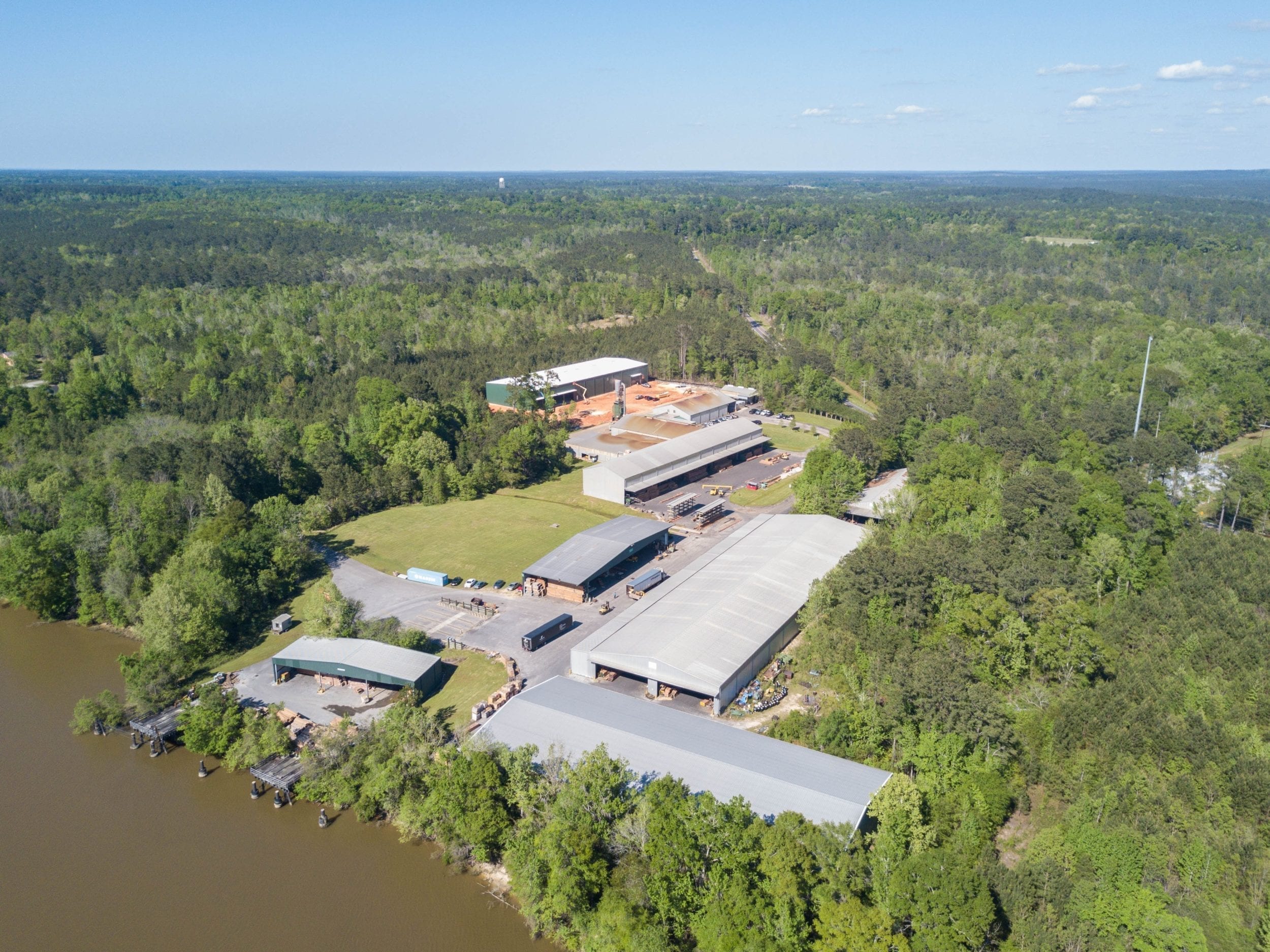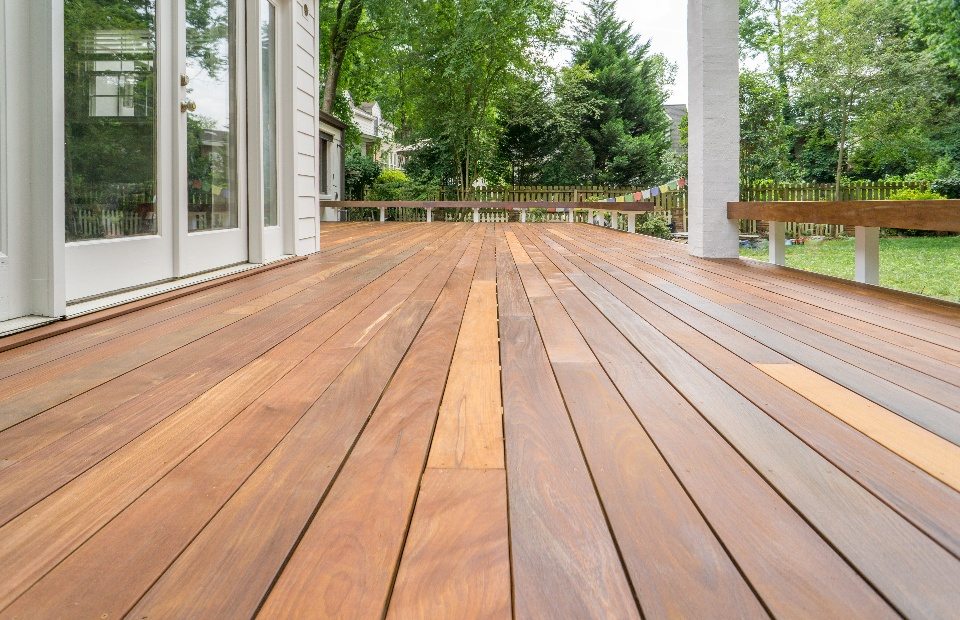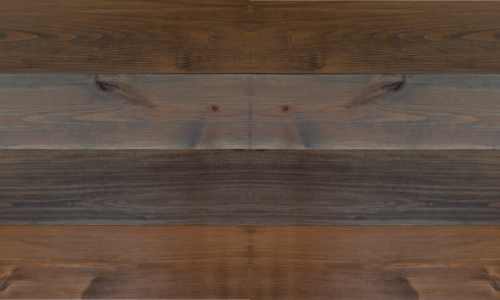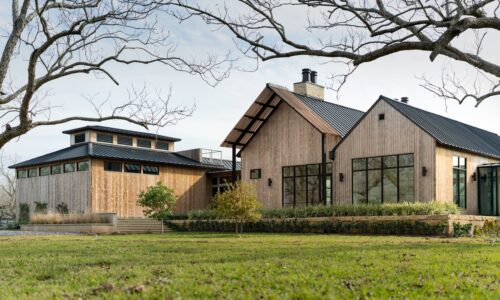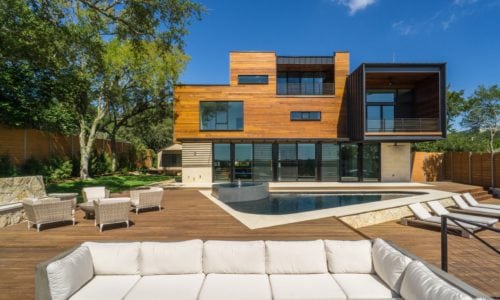Finishing (applying a protective coating or stain) a hardwood deck is different than a softwood deck, like cedar or treated pine. For instance, hardwoods like Ipe, Cumaru, Tigerwood, and Garapa are much more dense, making it difficult for finishes to penetrate the wood. Even when using the proper UV-inhibiting hardwood oil, the finishing material essentially stays on the surface. Tropical hardwoods age well even without a finish. While the color of the hardwood will change over time the integrity of the hardwood won’t be compromised like softwoods, which can splinter or crack excessively if left unprotected.
Hardwood decking will oxidize when exposed to sunlight, developing a handsome, silver/gray patina. Hardwoods gray from the outside in, so if a project has been unfinished for a longer time, the thicker the gray surface will be. Luckily, if a homeowner tires of the silvery-gray color of aged wood, it is possible to bring back the original color.
Types of Finishes / Coatings
Since the hardwood is essentially impenetrable by typical coatings, a hardwood penetrating oil is recommended. UV rays from the sun are responsible for oxidation on the hardwood’s surface, so a UV-inhibiting hardwood oil is best, such as Ipe Oil or Penofin Hardwood Oil. It’s worth reminding that oxidation and UV rays doesn’t damage hardwoods in the short term, but regularly applying a UV-inhibiting oil can increase the life of your project by years. UV-inhibiting oils will also help to maintain the natural color and minimize the graying from the sun.
Required Prepping
Fortunately, prep work is minimal to finish a hardwood deck. If your deck is less than two years old, or if it’s older but has been properly finished in the last couple of years, a simple power washing could do the trick. If that isn’t enough, apply a hardwood deck cleaner and brightener; you can also try some soap and water. It’s essential to apply the oil to a clean, dry surface. One exception is a brand new hardwood deck, which can sometimes have a mill glaze: a compressing of cell walls caused by process of machining the lumber to size. In some cases, you can sand the boards first to remove the glaze or us a prep to open the cells. Consult the manufacturer of the product you as using for best results.
If the deck has had several years of exposure to the sun and has completely grayed, you’ll may need to sand the boards to remove the oxidized surface, then follow the same instructions for finishing.
Finish Application
To stain a cedar or treated pine deck, one applies the stain with a roller or squeegee, letting the stain soak into the boards, then allows the stain to dry. Hardwood finishes, as you may have guessed, require a different application. Since the hardwoods are so dense, even penetrating oils don’t completely penetrate, resulting in a sticky and unsightly surface.
After a good washing, and making sure your deck is dry, apply the hardwood oil with a brush, wait ten to fifteen minutes, and then rub in as much oil as possible and remove any excess oil from the surface. If you’re finishing a large project, work in sections so you don’t have to walk on the finished surface. Depending on the heat and humidity of your location, the surface should be completely dry in a day or two.
Hardwood Maintenance
Maintenance of your deck depends on your location and your desired appearance for your project. If you live in an extremely hot, sunny climate, your deck might require an annual refinishing to maintain the natural color. However, if you live in a more temperate location or the project is partially shaded then your deck may only need to be refinished once every few years. The beauty of choosing a hardwood deck is that when it doesn’t look as new as you’d like, you can simply refinish!

